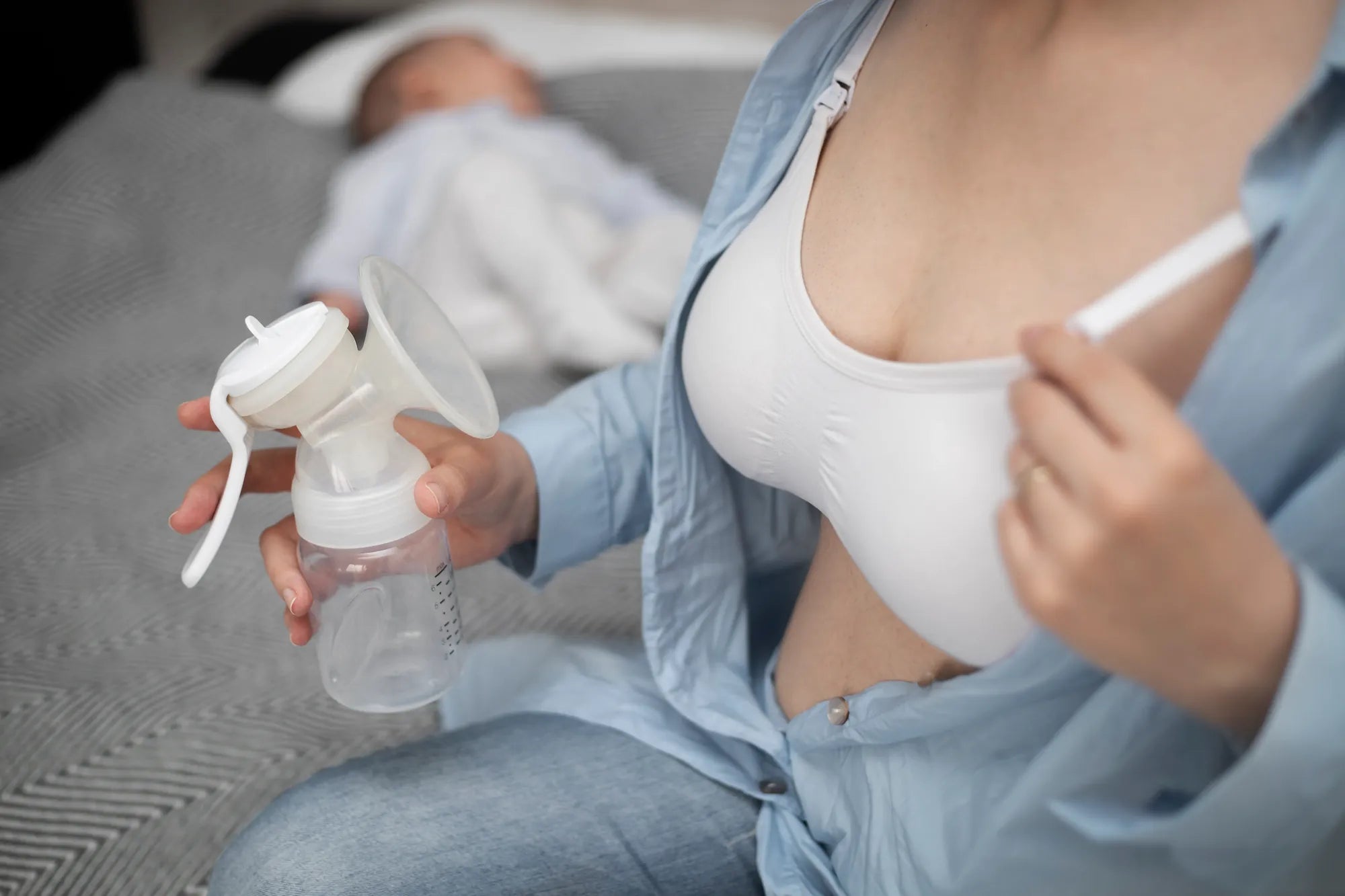Home
Pregnancy, Breastfeeding, and Pumping: The Ultimate Guide for Moms
What Do I Need to Pump and Store Breast Milk: A Complete Guide

What Do I Need to Pump and Store Breast Milk: A Complete Guide
Pumping and storing breast milk can be a game-changer for busy moms. Whether you're returning to work, need a break, or want to ensure your baby has a steady supply of milk, having the right tools and knowledge is crucial. This guide will walk you through everything you need to pump and store breast milk effectively.
Essential Equipment for Pumping Breast Milk
To get started with pumping breast milk, you'll need a few key pieces of equipment. First and foremost, a reliable breast pump is essential. There are various types of breast pumps available, including manual, electric, and hospital-grade pumps. Choose one that fits your lifestyle and pumping needs.
In addition to a breast pump, you'll need breast milk storage containers. These can be bottles, bags, or cups specifically designed for storing breast milk. Make sure they are BPA-free and easy to clean. A cooler bag with ice packs is also handy for transporting expressed milk when you're on the go.
Creating a Comfortable Pumping Environment
Creating a comfortable and relaxing environment can make pumping more enjoyable and efficient. Find a quiet, private space where you can sit comfortably. Some moms find it helpful to have a nursing pillow or a comfortable chair with good back support.
Having a hands-free pumping bra can also be a game-changer. This allows you to multitask while pumping, whether it's reading a book, checking emails, or simply relaxing. Additionally, having a water bottle and snacks nearby can help keep you hydrated and energized during pumping sessions.
Proper Techniques for Pumping Breast Milk
Using the correct pumping techniques can help maximize milk output and ensure comfort. Start by washing your hands thoroughly before handling your breast pump and storage containers. Position the breast shield correctly over your nipple to avoid discomfort and ensure efficient milk removal.
Pump for about 15-20 minutes per session, or until your breasts feel empty. It's normal for milk flow to vary during different times of the day. If you're using an electric pump, start with a low suction level and gradually increase it to a comfortable setting. Massaging your breasts before and during pumping can also help stimulate milk flow.
Storing Breast Milk Safely
Proper storage is crucial to maintain the quality and safety of your breast milk. Always use clean, sterilized containers for storing expressed milk. Label each container with the date and time of expression to ensure you use the oldest milk first.
Breast milk can be stored at room temperature for up to 4 hours, in the refrigerator for up to 4 days, and in the freezer for up to 6 months. If you're using a cooler bag with ice packs, milk can stay fresh for up to 24 hours. Avoid storing breast milk in the door of the refrigerator or freezer, as temperatures can fluctuate.
Thawing and Using Stored Breast Milk
When it's time to use stored breast milk, proper thawing and warming techniques are important. To thaw frozen milk, place it in the refrigerator overnight or hold it under warm running water. Avoid using a microwave to thaw or warm breast milk, as it can create hot spots and destroy valuable nutrients.
Once thawed, gently swirl the milk to mix the separated fat layers. Use thawed milk within 24 hours and do not refreeze it. If your baby doesn't finish a bottle of expressed milk, discard the leftover milk after feeding to prevent contamination.
Tips for Maintaining Milk Supply
Maintaining a healthy milk supply is essential for successful pumping and storing. Pump regularly, ideally every 2-3 hours, to mimic your baby's feeding schedule. Staying hydrated and eating a balanced diet can also support milk production.
Stress and fatigue can negatively impact milk supply, so make sure to get enough rest and practice self-care. If you're struggling with low milk supply, consider consulting a lactation consultant for personalized advice and support.
Traveling with Pumped Breast Milk
Traveling with pumped breast milk requires some planning to ensure it stays fresh and safe. Use a high-quality cooler bag with plenty of ice packs to keep the milk cold during transit. If you're flying, check the airline's guidelines for transporting breast milk, as some allow it as a carry-on item.
At your destination, store the milk in a refrigerator or freezer as soon as possible. If you're staying in a hotel, request a mini-fridge or use the ice bucket method to keep the milk cold. Always have extra storage containers and cleaning supplies on hand for convenience.
Cleaning and Maintaining Your Pumping Equipment
Keeping your pumping equipment clean is essential to prevent contamination and ensure the safety of your breast milk. After each use, disassemble the pump parts and wash them in warm, soapy water. Rinse thoroughly and allow them to air dry on a clean towel.
For added safety, sterilize the pump parts at least once a day by boiling them for 5-10 minutes or using a steam sterilizer. Regularly check the pump's tubing and other components for wear and tear, and replace them as needed to maintain optimal performance.
Pumping and storing breast milk doesn't have to be overwhelming. With the right equipment, techniques, and knowledge, you can ensure your baby has a steady supply of nutritious milk, even when you're not around. Start your pumping journey today and enjoy the flexibility and peace of mind it brings!
Share
